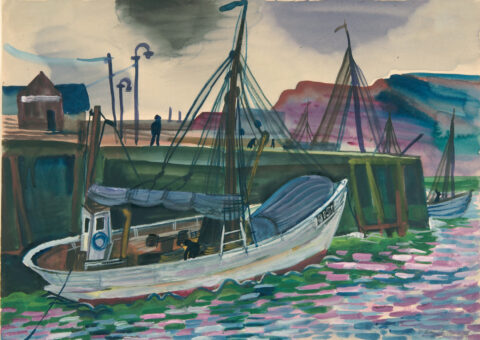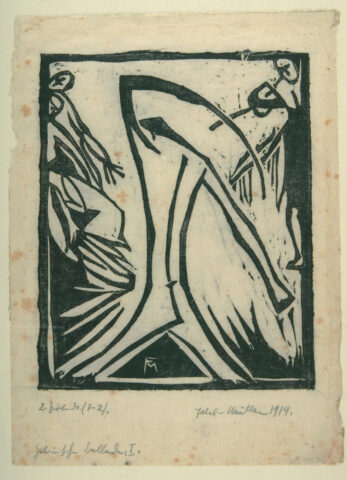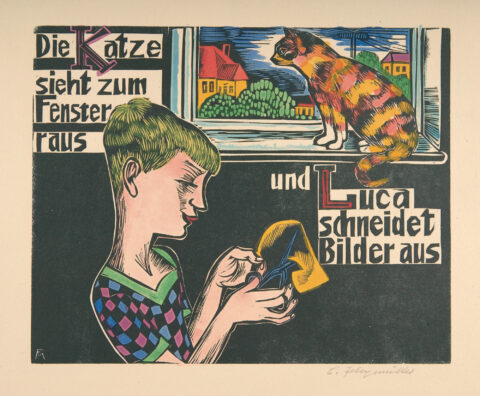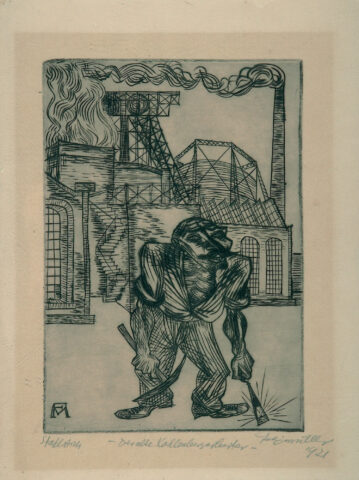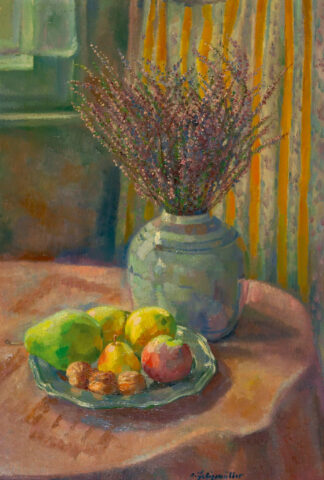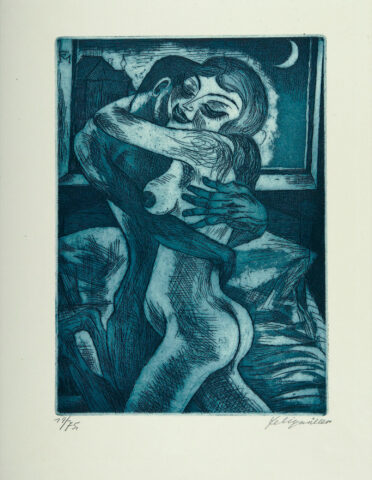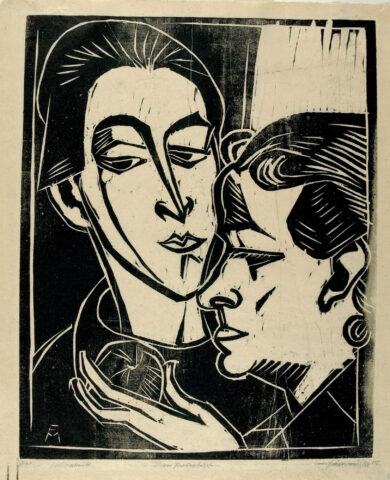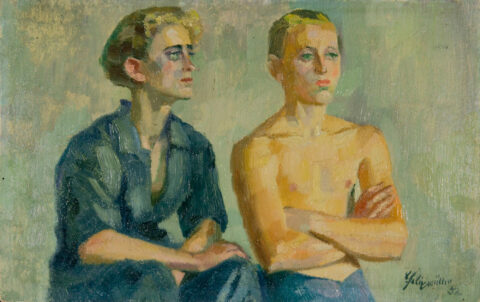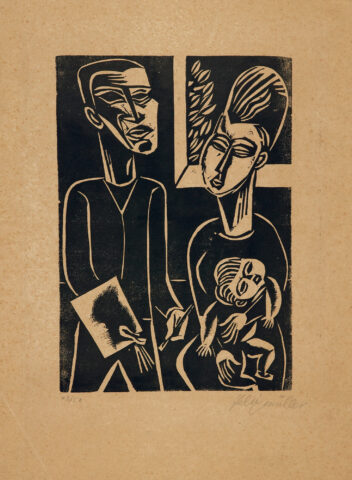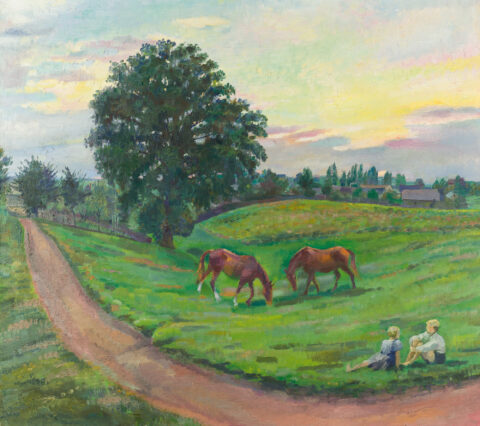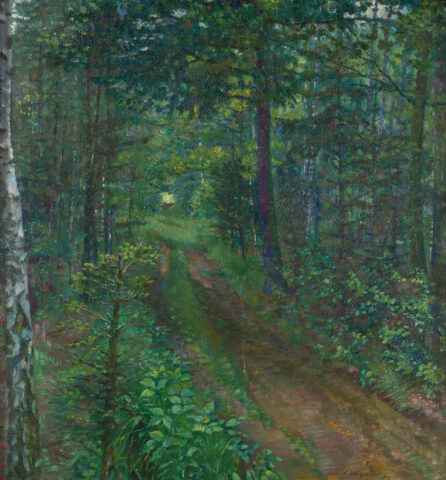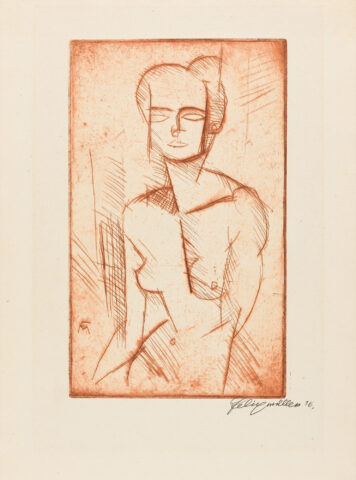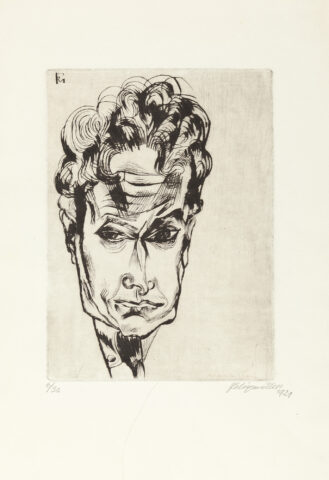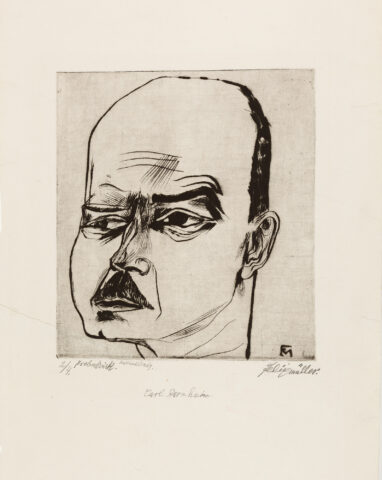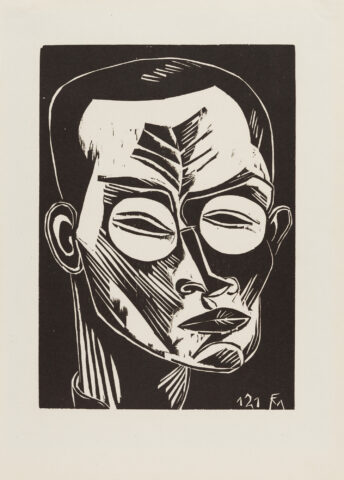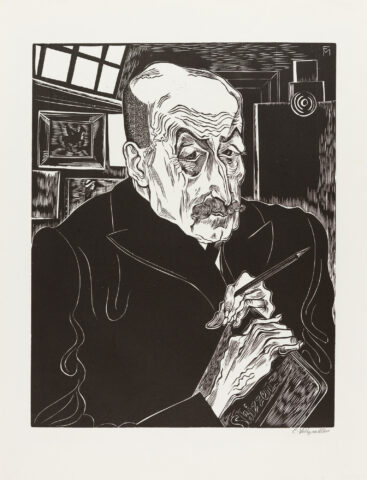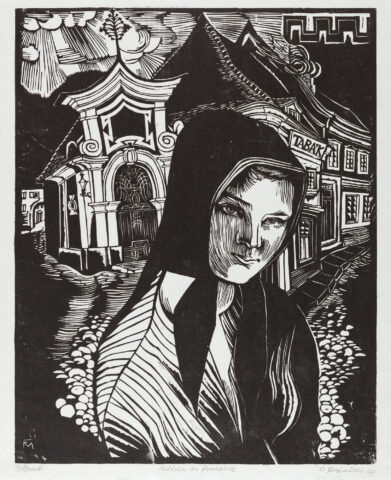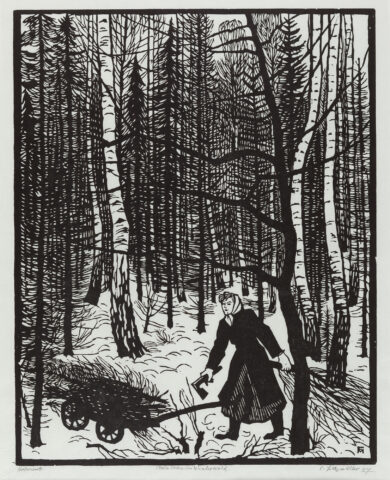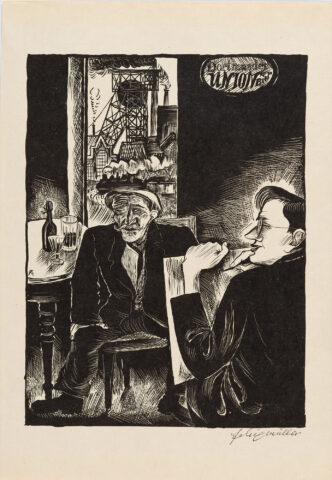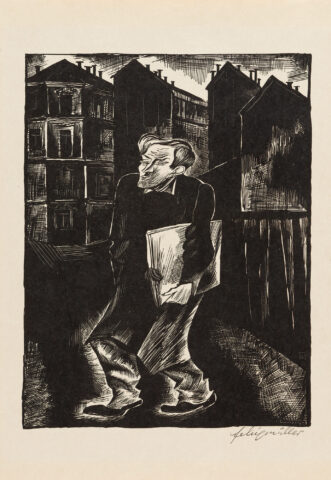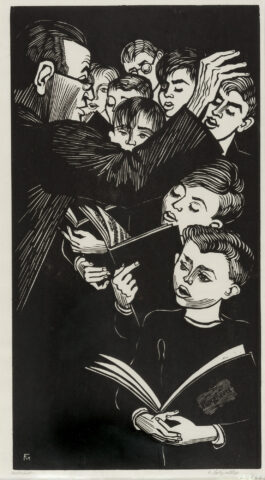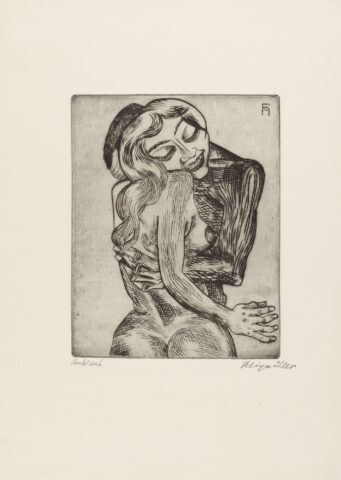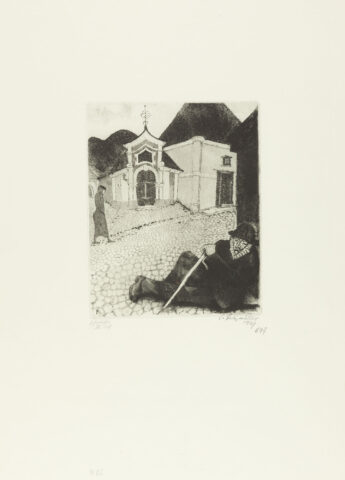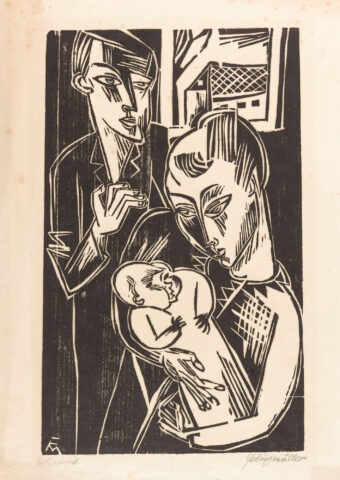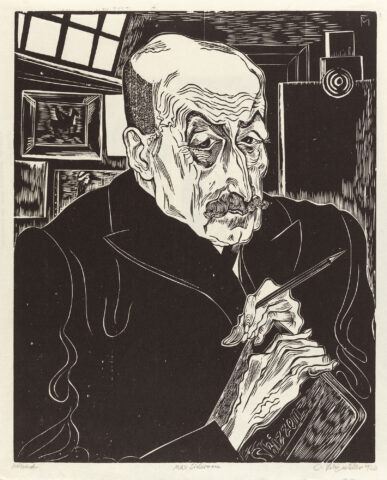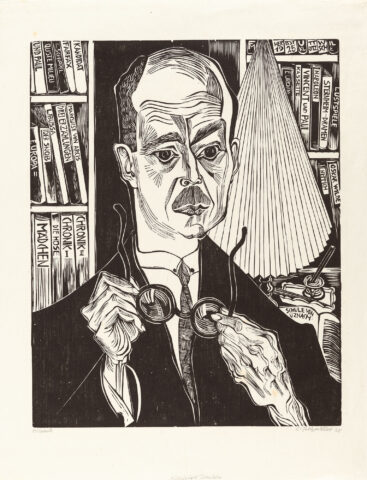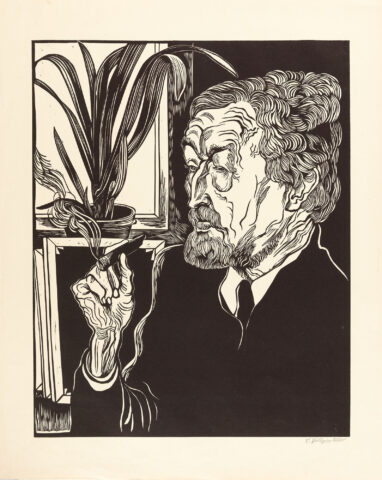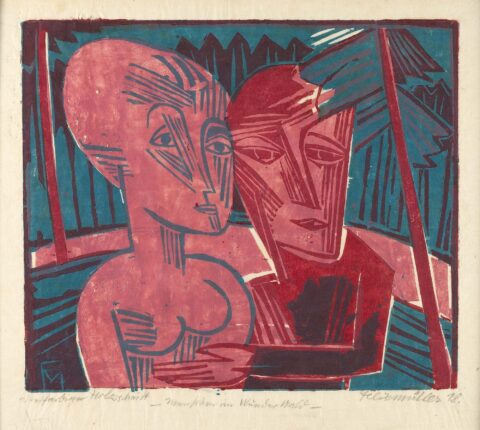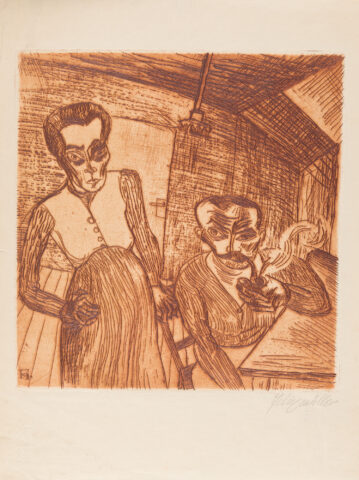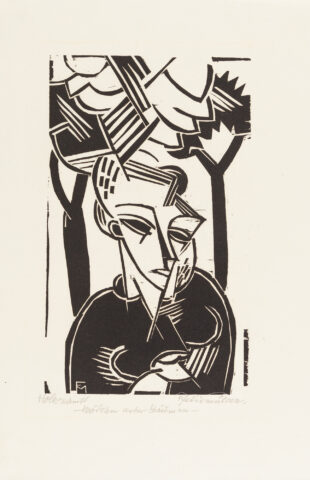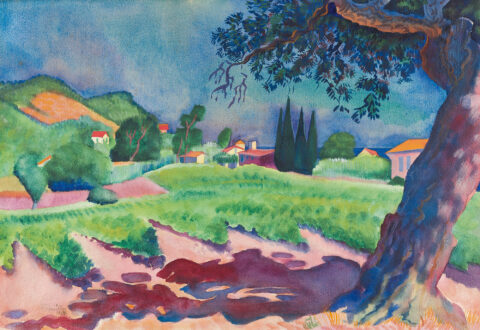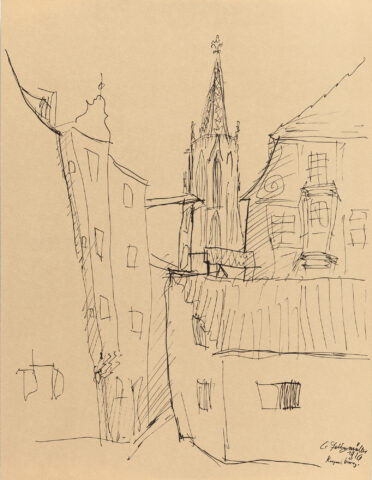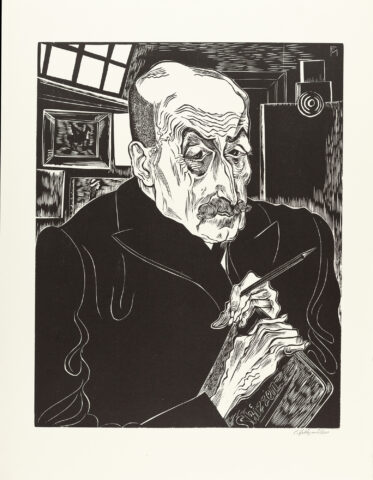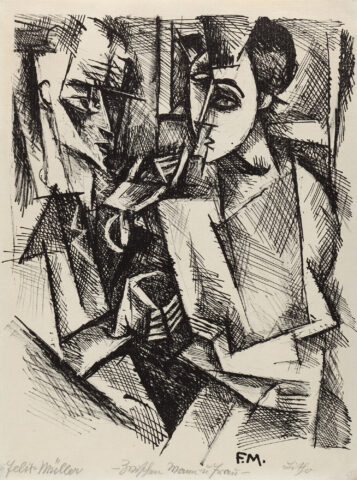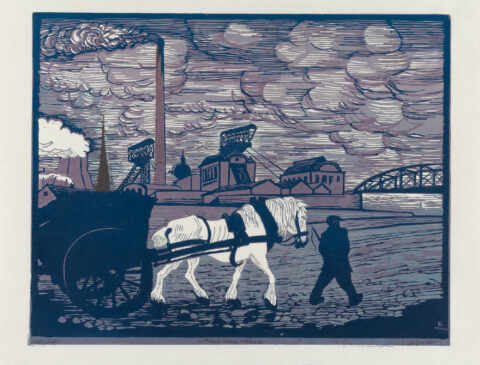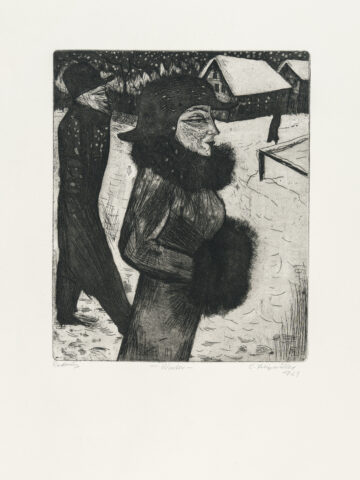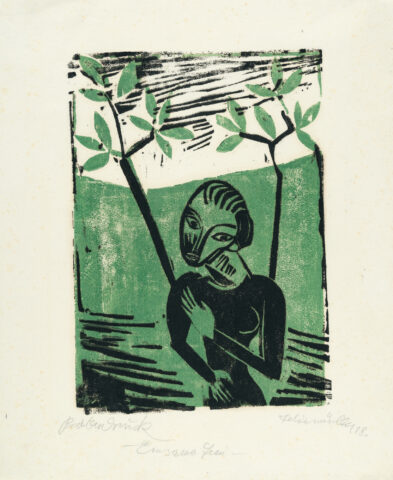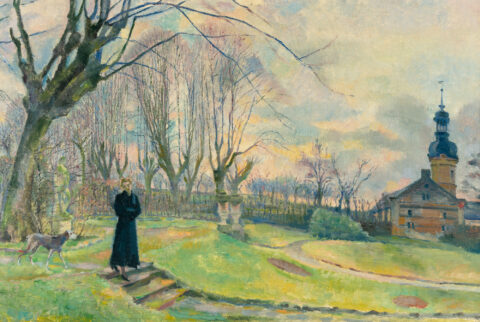Conrad Felixmüller
Felixmüller attended drawing school at the Dresden School of Arts and Crafts before becoming a master student under the painter Carl Bantzer at the Dresden Art Academy in 1912. As early as 1915, he became a freelance artist, associated with the Berlin avant-garde and made the acquaintance of Ludwig Meidner. Felixmüller stayed in the literary circles of Expressionism and socialised with Raoul Hausmann, Theodor Däubler and Johannes R. Becher, among others. Before the First World War, he exhibited at the gallery “der Sturm” in Berlin and at the Galerie Hans Goltz in Munich, was then drafted into military service and served as a nurse during the war years. In 1919 he became a founding member and president of the Dresden Secession Group 1919 with Lasar Segall, Otto Dix and Otto Griebel, as well as a member of the November Group. In the same year he joined the KPD. In 1928 he won the Grand Prize of the Dresden Kunstverein, exhibited at the Gurlitt Gallery in Berlin in 1929 and enjoyed many successes overall. In 1937, several of his works were ostracised as “degenerate” and shown in the exhibition “Degenerate Art”. Felixmüller was expelled from the Berlin Künstlerbund. Over 150 of his paintings were removed from public collections. After a short period of war service (1944/45) and Soviet captivity, Felixmüller was appointed professor at the Faculty of Education at Halle University in 1949. He taught here until 1961, but after his retirement he moved back to Berlin. In 1967 he moved from East Berlin to Berlin-Zehlendorf. An extensive retrospective of his artistic work was held in Dresden, Rostock and Berlin in 1975 and 1976.


